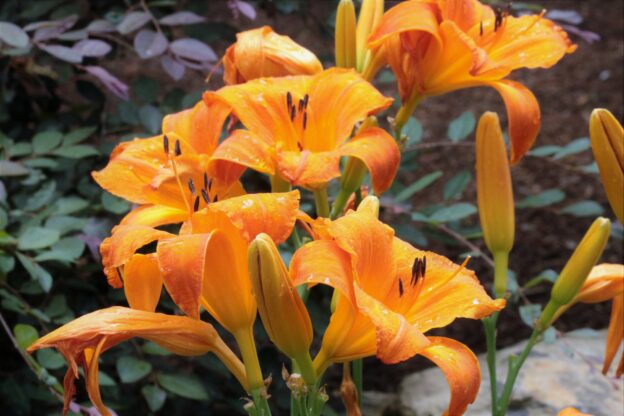When eating and plant shopping, our eyes are often bigger than our mouths and yards. When eating, you can choose to stop and you’re done. Plants don’t work that way, especially these aggressive thugs given away each spring by well-intentioned gardeners, year after year, because SURPRISE!, they have spread again!
There are many plants that fit in this category, but here are just a few people love to give away, and you should probably decline.
EDIT: During the gajillionth conversation with someone about this piece I offered this, which I am now adding to the article,
If you have it and it is well behaved, you shouldn’t feel a need to get rid of it.
If you have it and it is spreading, you should consider getting rid of it but at a minimum do NOT give away the plants you dig up.
If you do not have it and are considering planting some: Stop. Find other plants, preferably native, that will do just as good a job without risk of damaging the native flora/fauna.
Orange Day lily (Hemerocallis fulva): Who doesn’t enjoy seeing a few of these popping up, bright, orange, tall and joyous? They will grow almost anywhere, through monsoons and drought, without fail.
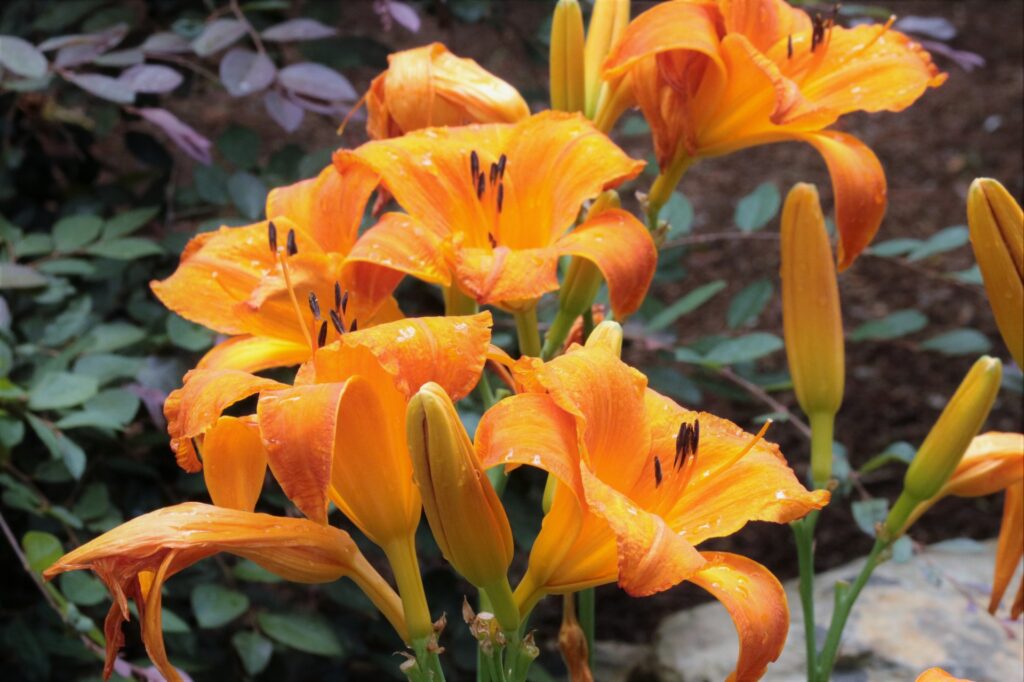
They will also spread like mad. I’ve seen them grow through cardboard, “weed block” cloth, 14″ of soil, and a combination of all three. Removal without herbicides is painstakingly slow and laborious. You need to dig up the soil and remove every single rhizome. Then next season you need to deal with the rhizomes you missed. Two years later you’ll need to do the same.
Lily of the Valley ( Convallaria majalis): Seriously, people? Every spring you’re going to offer up Lily of the Valley and pretend you’re being kind? That’s akin to offering someone Norwalk virus because you’ve got plenty to share.
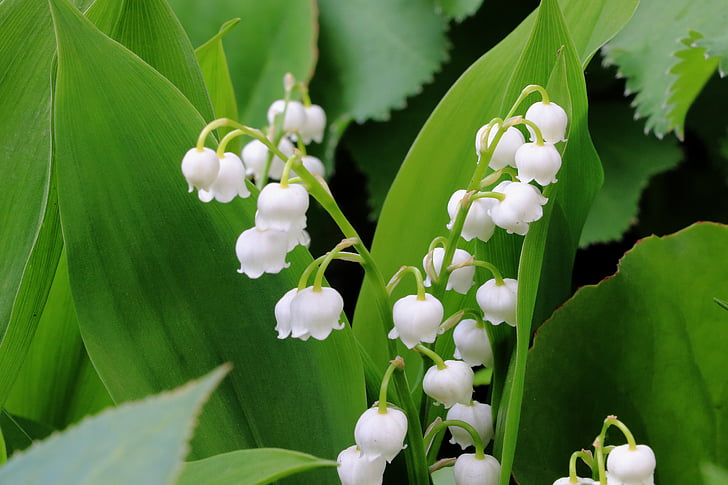
Lily of the Valley has a lot in common with the Orange Lily – it will grow in anything from full shade to full sun, it will tolerate wet and dry conditions, both will spread vigorously by rhizome. One big difference is that while Orange Lily is difficult to remove, Lily of the Valley is far, far more difficult. Smothering with a tarp for a few years is probably the most effective non-herbicide method of control because rhizomes of Lily of the Valley are small. Like, really small. Like, you’re not going to be able to recognize these rhizomes from any other roots, including grass roots, unless you’re taking the time to critically examine each one.
For a great photo of Lily of the Valley rhizomes compared to a penny, see here.
English Ivy (Hedera helix): Kill that shit. When we bought our first house, half the back yard was covered with several vines that had also grown up and killed several trees. Those trees, dead but heavy with the vines, were a safety hazard. With limited gardening or herbicide knowledge we jokingly talked of creating one called “Divy” (a combination of “die” and “ivy”).
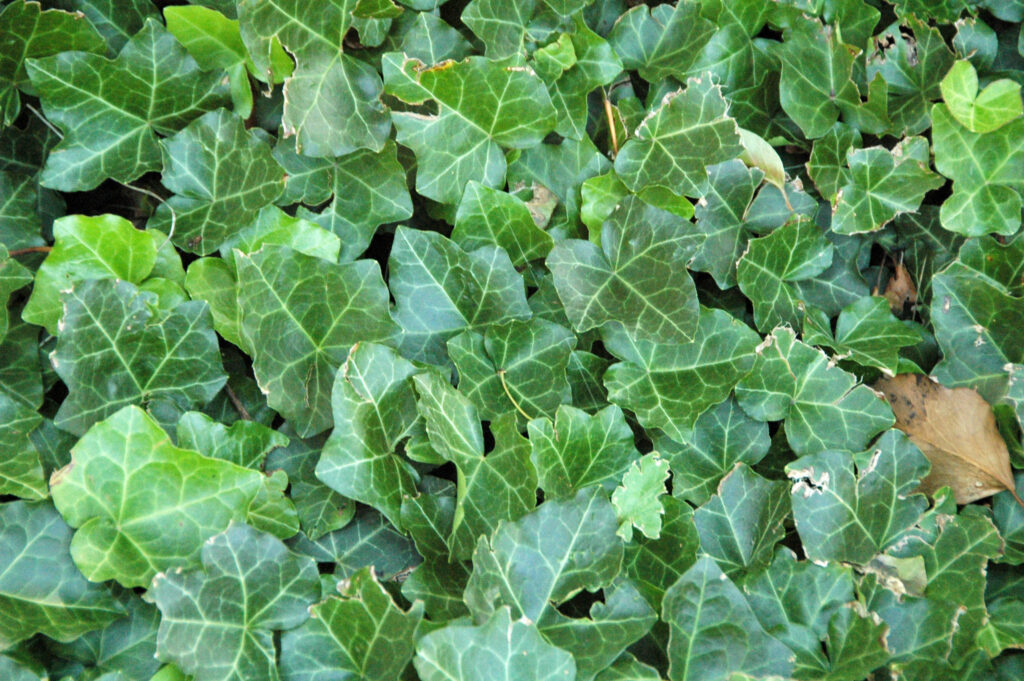
After spending thousands of dollars to remove those trees, several years work and (still) annual cutting back vines that reach our property from neighboring yards, we now have it under control. There is no question though, that if I ignore it for a season it will again gain solid footing and try to consume our entire property again.
Allow me to quote invasive.org: ” English ivy is an aggressive invader that threatens all vegetation levels of forested and open areas, growing along the ground as well as into the forest canopy.”
So the next time someone offers up or suggests growing English Ivy, please tell them where they can put it.
Vinca (Common periwinkle): It is everywhere. If that isn’t enough, it has a habit of escaping the confines of the manicured garden and creating dense mats in woodland floors, killing off native grasses and other low-growing natives.
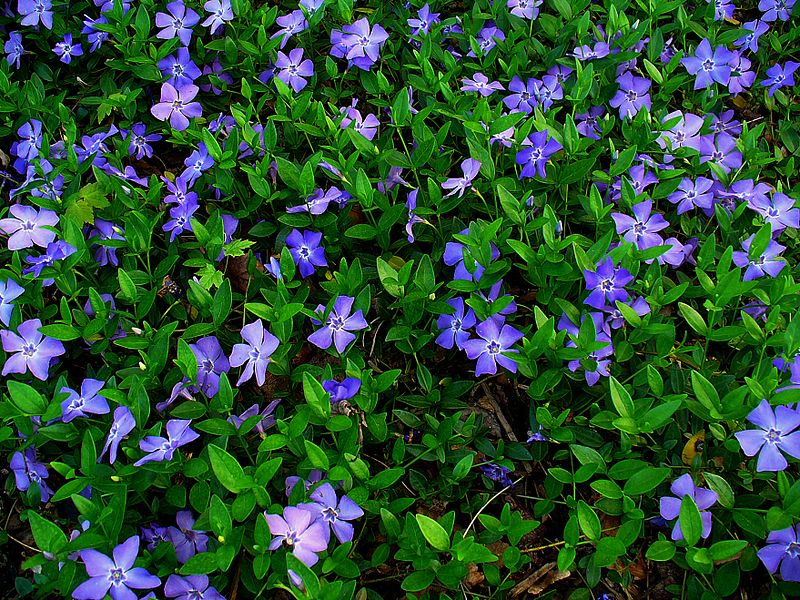
Vinca is not listed as an invasive species in MA, and we can all point to gardens where it is attractive, a good fit, and is kept in check. I think most of us can also point to places where it probably met that description for several years before it was allowed to grow out of control and create a mess that is difficult to clean up at best, and caused significant damage at worst.
Yarrow (Achillea millefolium): This is potentially the most confusing. Several varieties of yarrow are native to MA and New England, which should make them a good choice, right? It does make them a good choice, except that they spread like mad and stick around like a bad earworm.
Yarrow seeds survive hot composting. That means that spent flowers tossed in the compost will provide you with thousands of yarrow seedlings the following year. Maybe you want that, or maybe you don’t want yarrow popping up in all your tomato, melon, zinnia and other seed trays. Maybe you’re not interested in having yarrow spring up among your garlic and onions. Maybe you’ll find it annoying to differentiate between yarrow and carrot seedlings in the spring. Or maybe you do want those things – who am I to judge?
Yarrow is, without question, less thuggish than the others listed here and in reality easier to control/eliminate, so I hesitated to put them on this list, but its my list, so there you have it. I recommend choosing something else instead of yarrow, unless you’re prepared to keep them in control all season long, each season.

